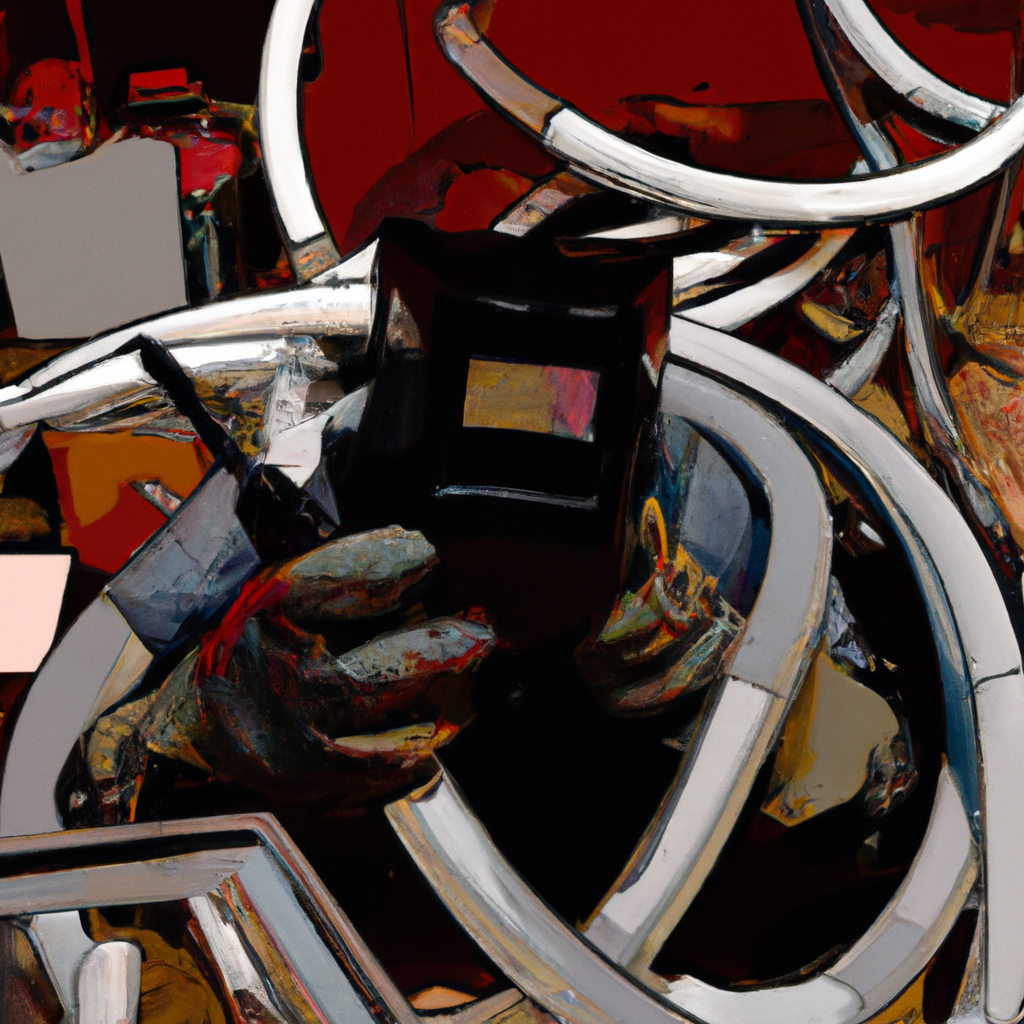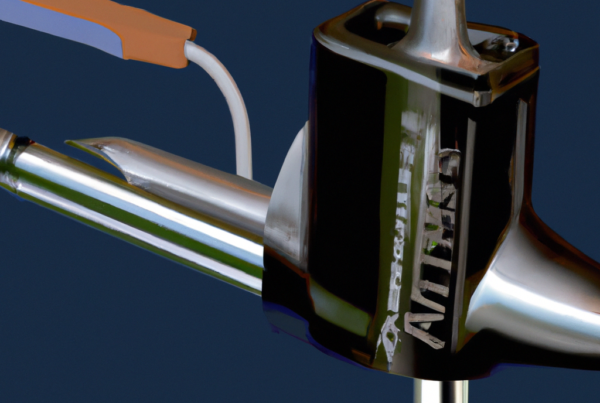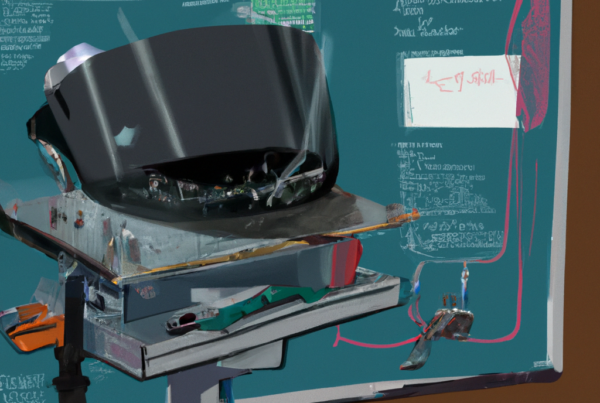A day in the life of a Welder is an exciting and challenging experience. From the moment the welding torch ignites and sparks fly, the welder is focused and engaged in the task at hand. With each weld, the welder must maintain a steady hand, an eye for detail, and a commitment to quality and safety. As the day progresses, the welder continues to hone their skills and craftsmanship while tackling a variety of projects. From building a bridge to creating a sculpture, a welder’s day is full of creativity and opportunity. With the right tools, the right attitude, and a passion for the craft, the welder can create something that will last a lifetime.

What type of Welder is being profiled?
A day in the life of a welder includes a variety of tasks depending on the type of welder. In this profile, we will focus on a TIG (Tungsten Inert Gas) Welder.
TIG Welders are skilled workers who use a tungsten electrode to join two pieces of metal together. They are used in a variety of industries, from automotive to aerospace.
On a typical day, a TIG Welder will:
- Inspect the metal pieces to be welded to ensure that there are no defects
- Set up the welding equipment, including the TIG torch, gas regulators, cables, and welding rods
- Select the right welding rod and tungsten electrode based on the type of metal being welded
- Position the pieces of metal to be welded in the correct position
- Control the speed of the welding process and adjust the heat output
- Monitor the weld joint to ensure it is of high quality
- Clean the weld joint and inspect it for defects
TIG Welders must also wear appropriate safety gear to protect against sparks and heat. They must be able to work quickly and accurately in order to produce high-quality welds.
What qualifications are needed to become a Welder?
To become a welder, there are several qualifications that need to be met. First, welders need to have a high school diploma or equivalent. Some employers may also require a welding certification. Additionally, welders need to have the physical strength and dexterity to handle the tools and materials required for their job.
Welders should have strong problem solving and analytical skills in order to identify and solve welding issues. They should also have excellent communication skills to effectively communicate with team members. Lastly, welders should be knowledgeable in safety regulations and protocols to ensure a safe working environment.
A day in the life of a welder is filled with activity. First, welders must inspect the materials they are working with and inspect equipment to ensure they are in safe working order. They must lay out the materials for their project and create a plan for how to best weld the materials together. Welders then use their tools and welding techniques to join the materials together. Finally, they inspect their work and make any corrections if needed.
What is a typical day in the life of a Welder like?
A typical day in the life of a welder involves many different tasks and responsibilities. The following is an outline of what a typical day could look like:
- Start the day by completing pre-welding inspections and safety checks on equipment.
- Set up welding equipment and select the appropriate welding processes for the job.
- Read and interpret blueprints, sketches, and other drawings.
- Cut and prepare metal parts for welding.
- Weld components using manual or semi-automatic welding processes.
- Perform post-welding inspections to check for accuracy and quality.
- Clean up work area and ensure all equipment is properly stored.
At the end of the day, welders must report their progress to their supervisor and address any issues that may have arisen during the day. A welder’s day is often filled with challenges and requires quick thinking and problem-solving skills.
What safety measures do Welders take on the job?
Welders must take several safety precautions when on the job. First and foremost, they should always wear the appropriate safety gear, such as safety glasses, face shields, welding gloves, and fire-resistant clothing. It’s also essential to keep the work area well-ventilated, as welding produces fumes and smoke that can be hazardous to inhale. Welders should also be sure to check their equipment before use to ensure that all connections and cables are secure and in working order.
When welding, it’s important to be aware of one’s surroundings. Sparks can fly, so it’s essential to keep combustible materials away from the work area. Additionally, it’s important to ensure that the area is clear of any bystanders who could be injured by the welding process.
Welders should also be familiar with the safety protocols and procedures of their workplace. These often include the use of respirators or other protective equipment while welding, as well as the proper storage and disposal of any welding materials and tools. Additionally, welders should be aware of any safety regulations, such as OSHA or NFPA, that may apply to their work.
Finally, it’s important for welders to take regular breaks while working. This will help to prevent fatigue, which can lead to accidents and injuries. Additionally, taking breaks will help to ensure that the work is done correctly and safely.
What tools and equipment are used by a Welder?
A welder’s day typically involves a wide range of tools and equipment. At the most basic, a welder would have a welding helmet, welding gloves, a welding jacket, and welding boots. Other essential tools for welding include a welding torch, an oxy-acetylene torch, and welding rods. Additionally, a welder may use clamps, magnets, hammers, and other hand tools for manipulating the metal being welded. A welder may also use a variety of power tools such as a drill, grinder, saw, and other cutting tools.
For welding, a welder will need an electric welding machine, which is used to supply the electric current to the welding rod. This machine is usually connected to a power source, such as a generator or an electrical outlet. Additionally, a welder may need a gas cylinder, a welding regulator, and a welding table.
Other tools that may be used by a welder include a welding wire brush, a welding gauge, and a welding gauge tester. Additionally, a welder may use a welding chipper, which is used to chip away excess metal. Lastly, a welder may use safety equipment such as safety glasses, respirators, and protective clothing.
In conclusion, a welder will use a wide variety of tools and equipment depending on the type of welding job they are doing. These tools and equipment range from basic safety supplies to more advanced welding machines, clamps, and other tools. It is important for a welder to have the right tools and equipment for the job so that they can perform the job safely and efficiently.
How does a Welder stay up to date on the latest welding technologies?
A day in the life of a welder involves keeping up to date with the latest welding technologies. A Welder can stay up to date on the latest welding technologies in several ways, including:
- Attending industry tradeshows and conferences, to learn about the latest equipment, techniques, and materials.
- Reading professional publications and online articles to stay abreast of new developments.
- Visiting welding supply stores and websites to see what kind of welding equipment and technology is available.
- Participating in welding forums and social media groups to exchange ideas and ask questions.
- Joining a local welding community or taking welding classes to gain hands-on experience.
By taking advantage of these opportunities, a Welder can stay on top of the latest trends in welding and ensure they are well-prepared for any welding project they may encounter.
What kind of welding projects can a Welder work on?
A Welder’s day is filled with a variety of welding projects. From fabricating structural beams to repairing broken equipment, a welder is responsible for completing a wide range of tasks. Here are some of the welding projects a welder can work on:
- Fabricating large-scale structures such as bridges, buildings, and storage tanks.
- Welding and repairing pipes, tanks, and other types of machinery.
- Welding and repairing pressure vessels and storage tanks.
- Building and repairing automobiles, aircraft, ships, and other vehicles.
- Fabricating and repairing tools and equipment for industrial and agricultural applications.
- Welding and repairing industrial and commercial machinery.
- Welding and repairing metal furniture and fixtures.
- Welding and repairing metal sculptures and architectural pieces.
- Fabricating and repairing ornamental pieces such as handrails, gates, and fences.
As you can see, welders can work on a wide range of projects. Their skills are essential in the construction, repair, and maintenance of many everyday items. Welders are highly sought after for their expertise in creating strong, secure, and aesthetically pleasing pieces.
What challenges does a Welder face on the job?
A welder’s job is a physically demanding and challenging profession. Each day brings its own unique set of challenges, and welders must be prepared to face them head-on. Here are just some of the challenges welders face on the job:
- Ensuring proper safety protocols are followed at all times.
- Meeting tight deadlines and producing quality work.
- Adapting to a variety of welding techniques and materials.
- Handling heavy machinery and tools in a safe manner.
- Maintaining focus and accuracy for long periods of time.
Welders must also be prepared to work in uncomfortable or hazardous conditions, such as extreme heat or cold temperatures, and hazardous materials. Despite the challenges, many welders find the job to be highly rewarding. With the proper training and dedication, welders can become experts in their trade and take pride in the work they do.
How does a Welder stay motivated and productive?
A day in the life of a welder can be both physically and mentally demanding. To stay motivated and productive, the following tips are usually helpful:
- Set achievable goals: Break down large jobs into smaller, more manageable tasks. This allows the welder to focus on completing each task one at a time and measure progress.
- Take regular breaks: This helps with mental fatigue and allows the welder to maintain focus and concentration.
- Keep proper records: This allows the welder to track their performance and progress and stay motivated.
By following these tips, welders can stay productive and motivated throughout their day. They can also take the time to appreciate their accomplishments and enjoy the satisfaction of completing a job well done.
How does a Welder deal with job stress?
A day in the life of a welder can involve long hours, heavy lifting, and working in hazardous conditions. Managing job stress is essential for a welder’s wellbeing. Here are some tips for dealing with job stress:
- Take regular breaks throughout the day to give yourself time to relax and recharge.
- Focus on healthy eating and getting enough sleep to ensure that you have the energy to handle challenges.
- Prioritize tasks and set realistic goals to manage workloads.
- Engage in physical activities like walking, running, or yoga to help alleviate stress.
- Find an outlet for your emotions, such as talking to a friend or writing in a journal.
- Practice deep breathing exercises to help clear your mind and improve your focus.
Welders must also be mindful of their mental health and seek help if needed. By taking steps to manage job stress, welders can better cope with the demands of the job and remain healthy.



